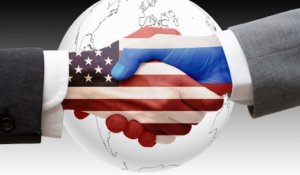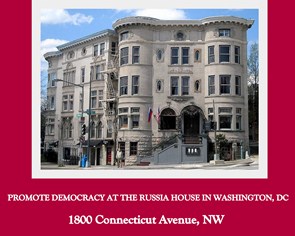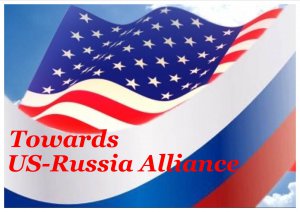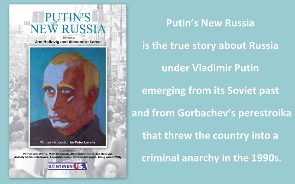
Published 3-07-2016, 18:02
 "We can only guess how many catastrophes were avoided
"We can only guess how many catastrophes were avoided by the remarkable cooperation between dedicated scientists, military,
and other government officials in the United States and Russia to prevent
nuclear weapons and materials from falling into dangerous hands in the
years following the Cold War.”
—Sam Nunn, former US senator and co-chairman of the Nuclear Threat Initiative
Those words speak to more than two decades of cooperation between US nuclear scientists and their Russian counterparts, a collaboration that is the topic of a new book to be released June 28 by Bathtub Row Press.
An account edited by Siegfried Hecker, Doomed to Cooperate tells the story of the collaboration through the words of American and Russian scientists who traveled to each other’s nuclear complexes to work together within the individual bounds of nuclear secrecy. The content reveals not only the scientific endeavors and benefits but also the intensity, emotion, friendships, and sometimes humor that resulted. Published in a two-volume set, Doomed to Cooperate is a reading experience.
 Known familiarly as lab-to-lab collaboration, the idea germinated with the joint verification experiments that followed the Reagan-Gorbachev summit in Reykjavik in 1986. Soviet and American nuclear scientists came together to monitor a nuclear test at the Nevada Test Site in 1988. This was followed by a second verification test at Semipalatinsk in the Soviet Union. The reciprocal verifications allowed the United States and the Soviet Union to ratify a treaty banning the testing of nuclear weapons of yields greater than 150 kilotons. The Threshold Nuclear Test Ban Treaty had been signed in 1974 but never ratified until joint verification became a reality. While each side was eager to share the other’s scientific and technical knowledge, the personal communication and respect that developed was of equal importance.
Known familiarly as lab-to-lab collaboration, the idea germinated with the joint verification experiments that followed the Reagan-Gorbachev summit in Reykjavik in 1986. Soviet and American nuclear scientists came together to monitor a nuclear test at the Nevada Test Site in 1988. This was followed by a second verification test at Semipalatinsk in the Soviet Union. The reciprocal verifications allowed the United States and the Soviet Union to ratify a treaty banning the testing of nuclear weapons of yields greater than 150 kilotons. The Threshold Nuclear Test Ban Treaty had been signed in 1974 but never ratified until joint verification became a reality. While each side was eager to share the other’s scientific and technical knowledge, the personal communication and respect that developed was of equal importance.
In the next three years, opportunities for verification expanded. American nuclear scientists were invited to the Soviet secret cities, and proposals for collaboration in the basic sciences were made by their scientists. In 1991 Soviet nuclear leaders Viktor Mikhailov and Evgeny Avrorin sent requests to Lawrence Livermore National Laboratory Director John Nuckolls and Los Alamos National Laboratory Director Siegfried Hecker for invitations to visit their US laboratories. Doors were opening wider on both sides.
Then, in the last months of 1991, the Soviet Union collapsed. A severe economic crisis and drop in living standards in the post-Soviet states ensued, an even worse situation than the Great Depression of the 1930s in the United States. Within that context was the fear of what might happen within the former Soviet nuclear enterprise. Were there nuclear warheads that were no longer secure? What would become of the new Russian Federation’s nuclear stockpile? Cooperation took on an urgent focus. The exchange visits of laboratory directors took place in early 1992. Russian Laboratory Directors Vladimir A. Belugin of VNIIEF and Vladimir Z. Nechai of VNIITF came to Lawrence Livermore and Los Alamos to initiate the visits, and two weeks later John Nuckolls and Siegfried Hecker were welcomed at VNIIEF and VNIITF, marking the beginning of lab-to-lab scientific collaboration.
The scientific, political, and human aspects are much larger and more complex than can be related here, but the in-depth story awaits in Doomed to Cooperate. The future of lab-to-lab collaboration is yet to be determined. As it stands now, Russian scientist Lev Ryabev has summed it up perfectly.
"Our job is to convince our respective leaderships that we
must keep working together. The only alternative is suspicion,
return to an arms race, and increased tension. We must not go
in that direction.”
An account edited by Siegfried Hecker, Doomed to Cooperate tells the story of the collaboration through the words of American and Russian scientists who traveled to each other’s nuclear complexes to work together within the individual bounds of nuclear secrecy. The content reveals not only the scientific endeavors and benefits but also the intensity, emotion, friendships, and sometimes humor that resulted. Published in a two-volume set, Doomed to Cooperate is a reading experience.
 Known familiarly as lab-to-lab collaboration, the idea germinated with the joint verification experiments that followed the Reagan-Gorbachev summit in Reykjavik in 1986. Soviet and American nuclear scientists came together to monitor a nuclear test at the Nevada Test Site in 1988. This was followed by a second verification test at Semipalatinsk in the Soviet Union. The reciprocal verifications allowed the United States and the Soviet Union to ratify a treaty banning the testing of nuclear weapons of yields greater than 150 kilotons. The Threshold Nuclear Test Ban Treaty had been signed in 1974 but never ratified until joint verification became a reality. While each side was eager to share the other’s scientific and technical knowledge, the personal communication and respect that developed was of equal importance.
Known familiarly as lab-to-lab collaboration, the idea germinated with the joint verification experiments that followed the Reagan-Gorbachev summit in Reykjavik in 1986. Soviet and American nuclear scientists came together to monitor a nuclear test at the Nevada Test Site in 1988. This was followed by a second verification test at Semipalatinsk in the Soviet Union. The reciprocal verifications allowed the United States and the Soviet Union to ratify a treaty banning the testing of nuclear weapons of yields greater than 150 kilotons. The Threshold Nuclear Test Ban Treaty had been signed in 1974 but never ratified until joint verification became a reality. While each side was eager to share the other’s scientific and technical knowledge, the personal communication and respect that developed was of equal importance. In the next three years, opportunities for verification expanded. American nuclear scientists were invited to the Soviet secret cities, and proposals for collaboration in the basic sciences were made by their scientists. In 1991 Soviet nuclear leaders Viktor Mikhailov and Evgeny Avrorin sent requests to Lawrence Livermore National Laboratory Director John Nuckolls and Los Alamos National Laboratory Director Siegfried Hecker for invitations to visit their US laboratories. Doors were opening wider on both sides.
Then, in the last months of 1991, the Soviet Union collapsed. A severe economic crisis and drop in living standards in the post-Soviet states ensued, an even worse situation than the Great Depression of the 1930s in the United States. Within that context was the fear of what might happen within the former Soviet nuclear enterprise. Were there nuclear warheads that were no longer secure? What would become of the new Russian Federation’s nuclear stockpile? Cooperation took on an urgent focus. The exchange visits of laboratory directors took place in early 1992. Russian Laboratory Directors Vladimir A. Belugin of VNIIEF and Vladimir Z. Nechai of VNIITF came to Lawrence Livermore and Los Alamos to initiate the visits, and two weeks later John Nuckolls and Siegfried Hecker were welcomed at VNIIEF and VNIITF, marking the beginning of lab-to-lab scientific collaboration.
The scientific, political, and human aspects are much larger and more complex than can be related here, but the in-depth story awaits in Doomed to Cooperate. The future of lab-to-lab collaboration is yet to be determined. As it stands now, Russian scientist Lev Ryabev has summed it up perfectly.
"Our job is to convince our respective leaderships that we
must keep working together. The only alternative is suspicion,
return to an arms race, and increased tension. We must not go
in that direction.”
—Lev C. Ryabev, former Deputy Minister of the Atomic Energy of the Russian Federation


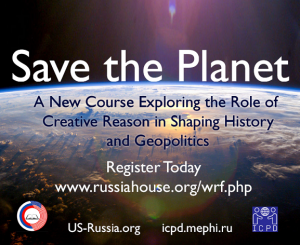
.jpg/250px-ElbeDay1945_(NARA_ww2-121).jpg)
